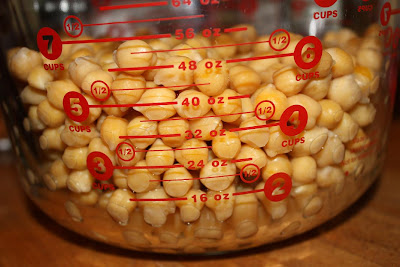
The idea for making large containers of fruit salad ahead of time goes to my friend Sue. She shared this idea with me about a month ago and I have been enjoying it ever since. If you haven’t tried making fruit salad on the weekend to last a few days give it a try. It works like a charm. Thanks Sue!
Fruit Salad – Cantaloupe, Orange, Apple and Grape
Makes 3.2 quarts
Ingredients:
1 cantaloupe, cut into bite size pieces
1 orange, peeled and cut into bite size pieces **
1 gala apple, cut into bite size pieces
1 cup of green grapes, halved
Directions:
Mix everything together and refrigerate. This will last a few days in the refrigerator if covered tightly.
** Please note, Sue would supreme her oranges. I, being the rebel that I am, leave the membrane between the citrus sections for extra fiber and cholesterol protection. I read that the membrane of the grapefruit helps to remove the existing plague from your arteries and began leaving all citrus membrane on my fruit. Before you ask, I don't know if the membrane theory has any validity but on the outside chance it does I figured why not give it a go.
Nutritional Information (entire recipe):
Amount Per Serving
Calories - 456.32
Calories From Fat (3%)- 14.81
Fruit Salad – Cantaloupe, Orange, Apple and Grape
Makes 3.2 quarts
Ingredients:
1 cantaloupe, cut into bite size pieces
1 orange, peeled and cut into bite size pieces **
1 gala apple, cut into bite size pieces
1 cup of green grapes, halved
Directions:
Mix everything together and refrigerate. This will last a few days in the refrigerator if covered tightly.
** Please note, Sue would supreme her oranges. I, being the rebel that I am, leave the membrane between the citrus sections for extra fiber and cholesterol protection. I read that the membrane of the grapefruit helps to remove the existing plague from your arteries and began leaving all citrus membrane on my fruit. Before you ask, I don't know if the membrane theory has any validity but on the outside chance it does I figured why not give it a go.
Nutritional Information (entire recipe):
Amount Per Serving
Calories - 456.32
Calories From Fat (3%)- 14.81
Total Fat - 1.76g
Saturated Fat - 0.43g
Cholesterol - 0mg
Sodium - 92.9mg
Potassium - 2260.14mg
Total Carbohydrates - 114.68g
Fiber - 14.14g
Sugar - 99.7g
Protein - 7.88g
Comments:
When something like this fruit salad is on the top shelf of the refrigerator, it becomes my default mid afternoon snack of choice. Since the entire container (which no human could possibly eat) is only 456 calories, this makes a great dish for when you need a little something but don’t want a lot of calories. You could jazz this up with a few toasted walnuts or almonds when you get ready to serve. A little drizzle of lemon cello over the fruit would also be divine. If you have mint in your garden you could add some julienned mint leaves or a nice minty syrup you made with agave. The options are endless for dressing this up.
Saturated Fat - 0.43g
Cholesterol - 0mg
Sodium - 92.9mg
Potassium - 2260.14mg
Total Carbohydrates - 114.68g
Fiber - 14.14g
Sugar - 99.7g
Protein - 7.88g
Comments:
When something like this fruit salad is on the top shelf of the refrigerator, it becomes my default mid afternoon snack of choice. Since the entire container (which no human could possibly eat) is only 456 calories, this makes a great dish for when you need a little something but don’t want a lot of calories. You could jazz this up with a few toasted walnuts or almonds when you get ready to serve. A little drizzle of lemon cello over the fruit would also be divine. If you have mint in your garden you could add some julienned mint leaves or a nice minty syrup you made with agave. The options are endless for dressing this up.











































